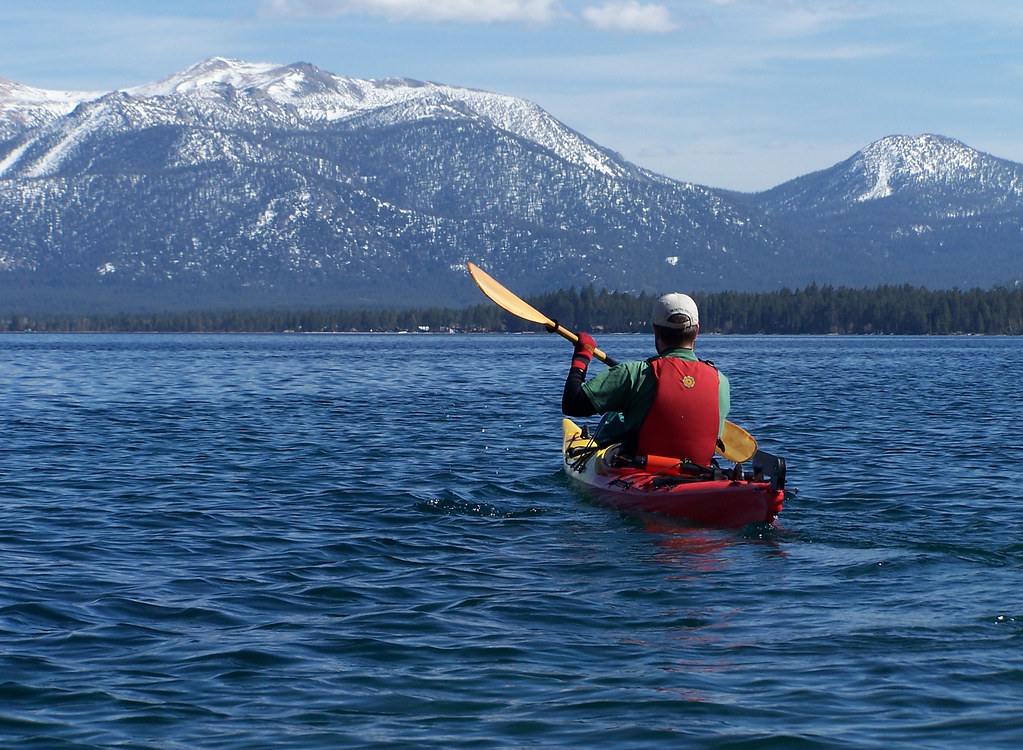# The 15 Best Lakes and Rivers in America for Kayaking Adventures
America’s diverse waterways offer some of the most spectacular kayaking experiences in the world. From peaceful lake paddles to exhilarating whitewater rapids, the country’s natural water features provide endless opportunities for paddlers of all skill levels. Whether you’re seeking serene natural beauty, challenging rapids, or wildlife encounters, these top 15 destinations showcase the best of American waterways. Each location offers its own unique characteristics, seasonal considerations, and unforgettable experiences that make them standout destinations for kayaking enthusiasts. This guide will help you discover America’s most exceptional paddling destinations, from coastal mangroves to mountain-fed rivers and glacier-carved lakes.
1. Colorado River through the Grand Canyon, Arizona
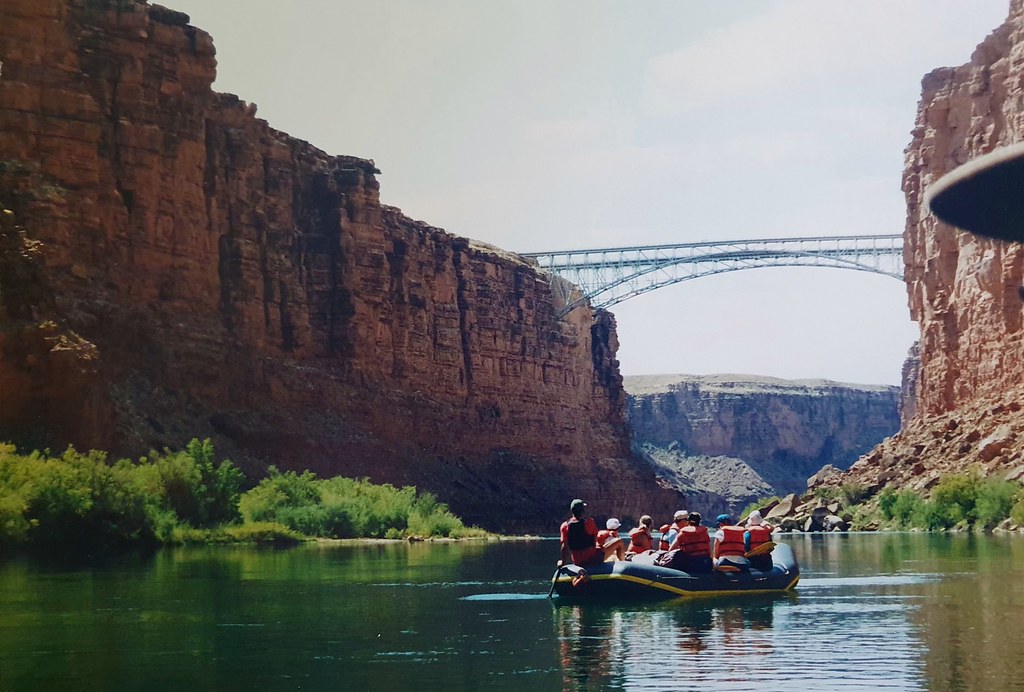
The Colorado River’s journey through the Grand Canyon represents the ultimate bucket-list kayaking adventure for experienced paddlers. Cutting through nearly two billion years of geological history, this epic 277-mile stretch offers multi-day expeditions with Class III-V rapids interspersed with calmer sections perfect for absorbing the towering canyon walls. Permits for private trips are highly competitive, awarded through a weighted lottery system that sometimes requires years of applications. The best time to paddle is during the spring and fall seasons when temperatures are more moderate and flash flood risks are lower. Beyond the technical challenges, kayakers are rewarded with access to side canyons, waterfalls, and archaeological sites that remain hidden to rim visitors.
2. Boundary Waters Canoe Area Wilderness, Minnesota
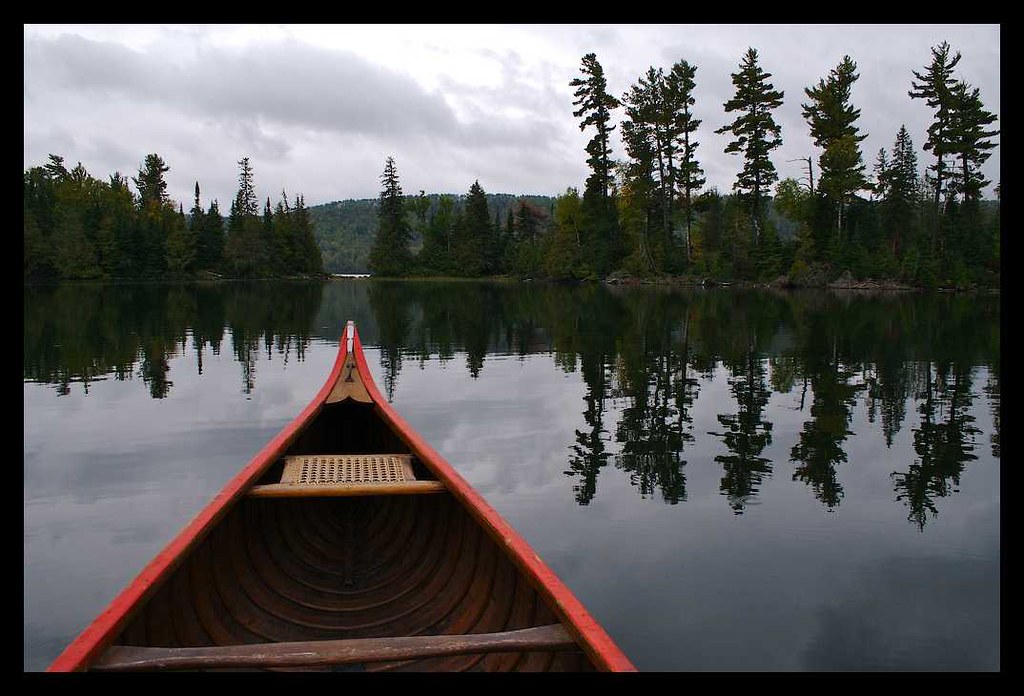
Stretching along the Minnesota-Canada border, the Boundary Waters Canoe Area Wilderness encompasses over a million acres containing more than 1,100 lakes connected by hundreds of miles of rivers and portage trails. This pristine wilderness offers kayakers a labyrinth of interconnected waterways to explore, with many routes allowing for multi-day expeditions through remote areas that haven’t changed since voyageurs first traveled them centuries ago. Wildlife sightings frequently include moose, beavers, otters, and bald eagles, while the area’s dark sky designation makes it perfect for nighttime stargazing from your campsite. The paddling season runs from May through September, though June and July offer warmer water temperatures and fewer insects than the shoulder seasons. The area’s strict management keeps motorboat access limited, ensuring a peaceful wilderness experience.
3. Lake Tahoe, California/Nevada
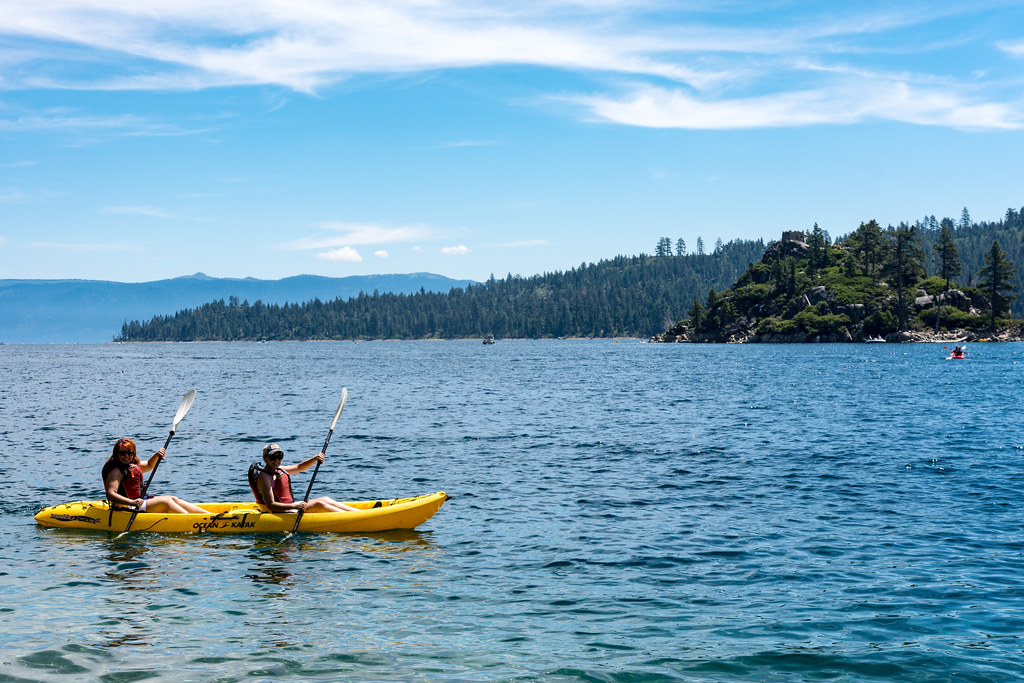
Straddling the California-Nevada border, Lake Tahoe’s crystal-clear waters and mountain backdrop create one of America’s most visually stunning kayaking destinations. The second-deepest lake in the United States features remarkable water clarity that can exceed 70 feet in some areas, allowing paddlers to peer down at submerged boulders and features far below the surface. The lake’s 72-mile shoreline offers diverse paddling experiences, from developed beaches with easy access to secluded coves only reachable by water. The east shore’s boulder-studded coastline, particularly around Sand Harbor and Bonsai Rock, provides the most photogenic paddling opportunities. While summer brings warm temperatures perfect for swimming breaks, spring and fall offer fewer crowds and calmer morning conditions before afternoon winds pick up across this alpine lake.
4. Everglades National Park, Florida
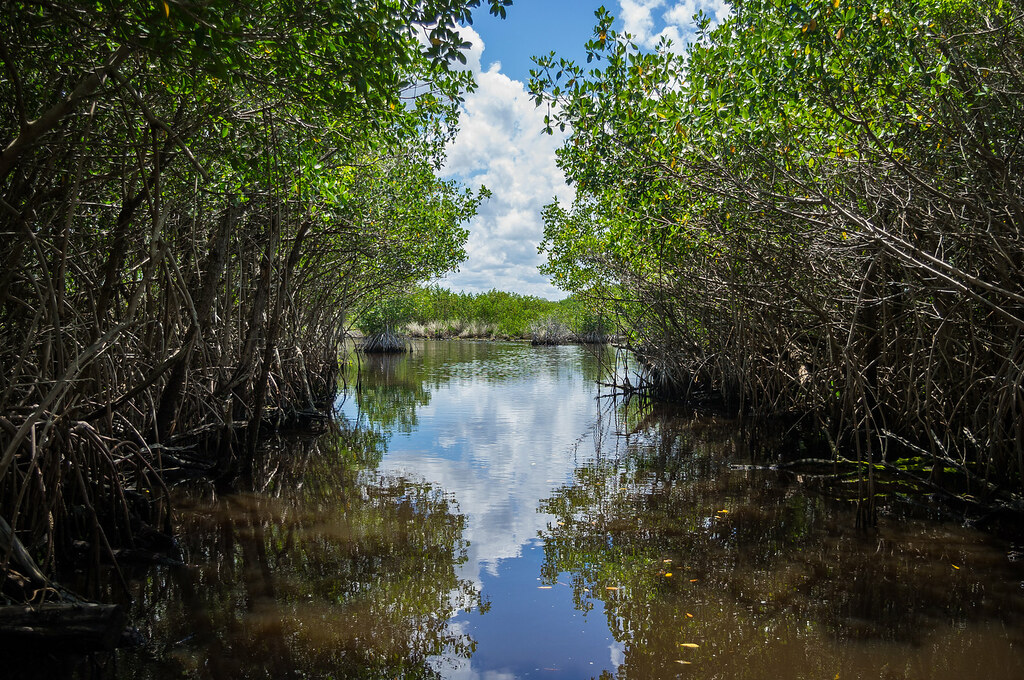
The Everglades’ vast network of mangrove tunnels, open water prairies, and tidal creeks creates a subtropical paddling paradise unlike anywhere else in America. Kayakers can navigate through the park’s unique ecosystem via marked water trails such as the 99-mile Wilderness Waterway or shorter day trips through mangrove tunnels where forest canopies completely enclose the passages. Wildlife viewing opportunities are exceptional, with alligators, manatees, dolphins, and hundreds of bird species regularly spotted from the water level vantage point. Winter (December through April) offers the ideal paddling season with comfortable temperatures, lower humidity, and significantly fewer mosquitoes than summer months. The Everglades’ tidal influences add another dimension to trip planning, with changing water levels revealing or concealing routes depending on the tide stage.
5. San Juan Islands, Washington
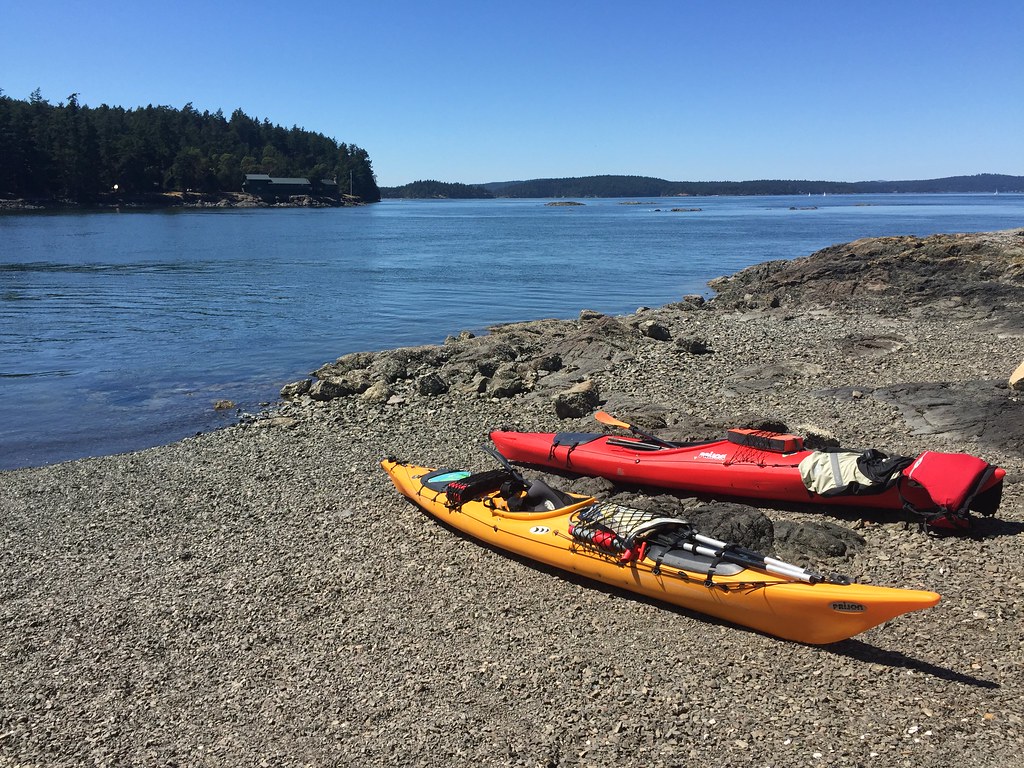
Washington’s San Juan Islands offer sea kayakers a protected inland archipelago with abundant marine wildlife and island-hopping opportunities. The area’s nutrient-rich waters support three resident orca pods along with minke whales, porpoises, seals, and sea lions that kayakers can observe from a respectful distance. Paddling between the 172 named islands and reefs provides opportunities to explore diverse landscapes, from madrone-lined shores to rocky bluffs and pocket beaches. The islands’ position in the rain shadow of the Olympic Mountains creates a surprisingly dry microclimate, with many areas receiving half the rainfall of nearby Seattle. Summer offers the most reliable weather conditions, though spring visits coincide with wildflower blooms and fall trips provide opportunities to see migratory birds passing through the region.
6. Buffalo National River, Arkansas
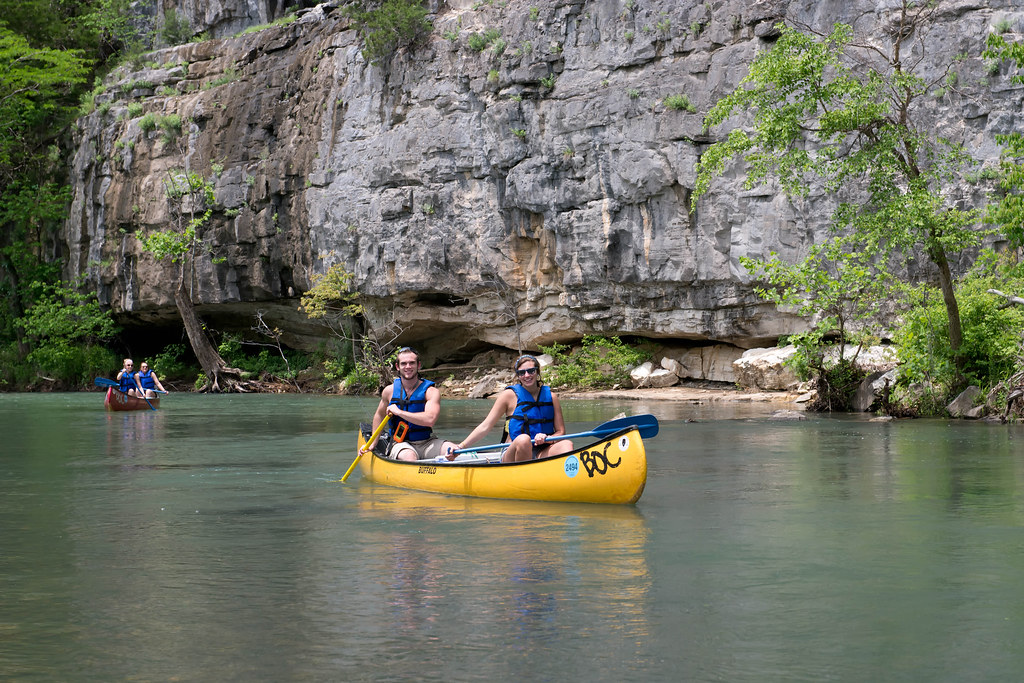
As America’s first designated National River, the Buffalo cuts through the Ozark Mountains creating one of the most scenic waterways in the mid-South region. Its 135-mile length transitions from swift mountain stream to gentle meanders, with dramatic limestone bluffs rising hundreds of feet directly from the water’s edge. Spring paddling (March to early May) offers the most reliable water levels for the upper sections, while the middle and lower portions remain navigable through summer for kayakers seeking a more relaxed pace. Numerous side hikes from the river lead to features like Hemmed-In-Hollow (the tallest waterfall between the Rockies and Appalachians), Indian rockhouses, and historic homesteads. The Buffalo’s pristine nature stems from its protected status, which prevented damming and development that changed many similar waterways in the region.
7. Apostle Islands National Lakeshore, Wisconsin
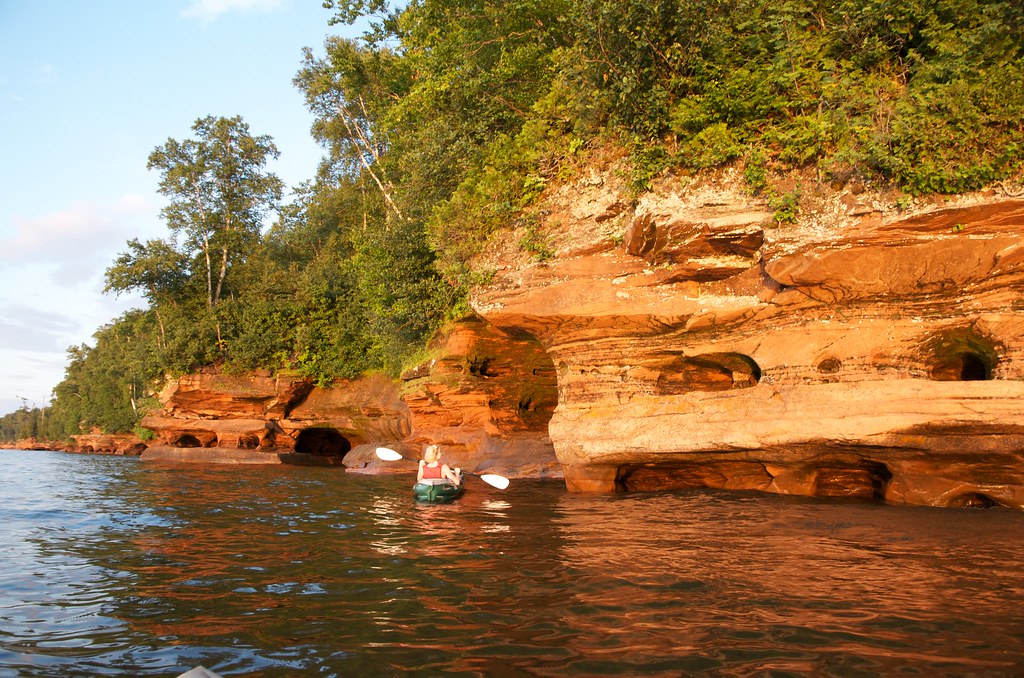
Lake Superior’s Apostle Islands offer sea kayakers the chance to explore a freshwater archipelago dotted with historic lighthouses, sandstone sea caves, and protected beaches. The islands’ most famous paddling attraction remains the mainland sea caves, where centuries of wave action have carved red sandstone into intricate chambers, arches, and passageways that kayakers can weave through during calm conditions. Summer brings the most reliable conditions for crossing between islands, though experienced paddlers with proper cold-water gear can visit in winter when the caves transform into spectacular ice formations. The archipelago’s 21 islands provide abundant camping opportunities, allowing multi-day expeditions to visit remote beaches and historic sites including shipwrecks visible through Superior’s clear waters. The lake’s notoriously changeable conditions demand respect and proper preparation, as calm mornings can quickly transition to three-foot swells with little warning.
8. Current River, Missouri
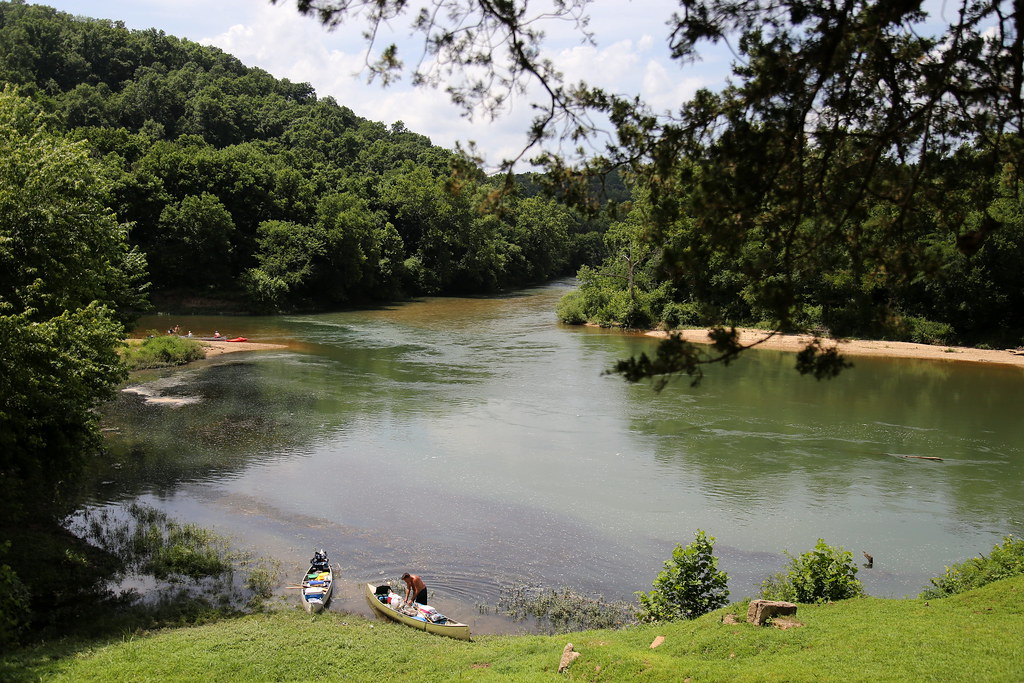
The Current River flows through the Ozark National Scenic Riverways as one of America’s finest examples of a spring-fed river, maintaining consistent water levels and clarity year-round. Its crystal-clear waters, consistently fed by some of the country’s largest freshwater springs, maintain a near-constant 58-degree temperature that provides welcome relief during hot Missouri summers. Massive springs like Big Spring (pumping over 286 million gallons daily) and Blue Spring can be paddled to directly, allowing kayakers to witness the source waters emerging from underground cave systems. The river’s generally gentle Class I character makes it ideal for beginners and families, though some sections offer small rapids and features to keep experienced paddlers engaged. The Current’s year-round paddleability makes it exceptional in the Midwest, where seasonal water levels affect many other rivers dramatically.
9. Lake Powell, Utah/Arizona

Created by the damming of the Colorado River, Lake Powell offers kayakers a surreal landscape of flooded slot canyons and red rock formations stretching across the Utah-Arizona border. With nearly 2,000 miles of shoreline – longer than the entire west coast of the continental United States – paddlers can explore countless narrow side canyons where sheer walls rise directly from the water’s surface. The lake’s most spectacular kayaking attractions include Cathedral Canyon, Antelope Canyon, and Rainbow Bridge National Monument, the world’s largest natural bridge, accessible via a paddle and short hike. Spring and fall provide the most comfortable temperatures, though summer allows for camping on the lake’s numerous beaches and swimming in the refreshing waters. Water levels fluctuate dramatically depending on regional precipitation patterns, revealing different features and passages as levels rise and fall.
10. St. Mary’s River, Florida/Georgia
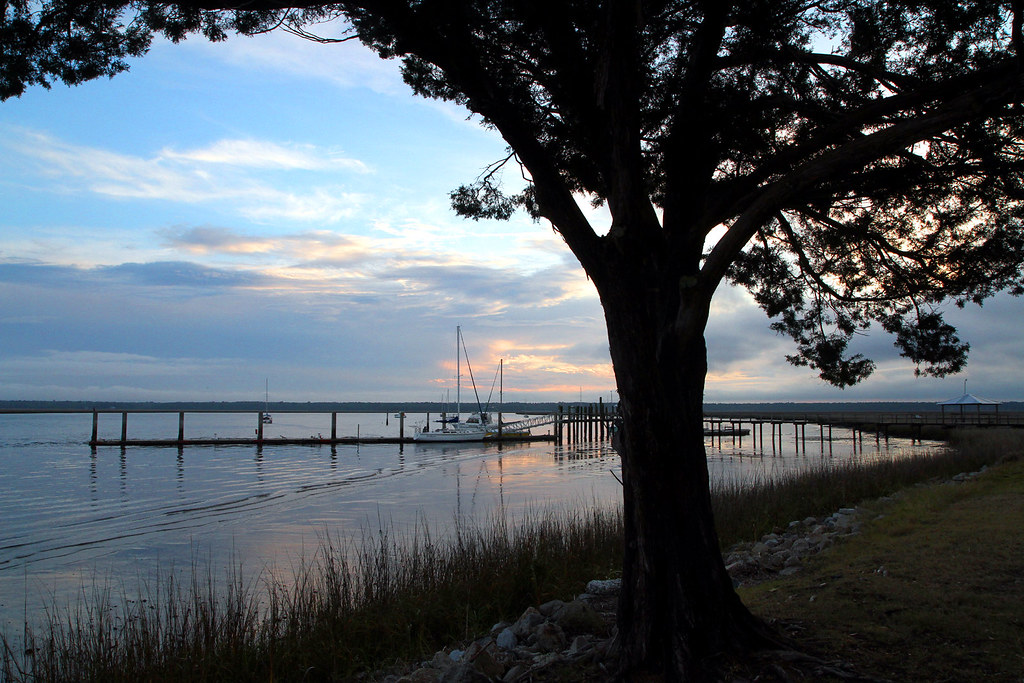
Forming part of the Florida-Georgia border, the St. Mary’s River offers a quintessential blackwater paddling experience through old-growth cypress forests and subtropical wilderness. The river’s tea-colored water, stained by natural tannins from surrounding vegetation, creates mirror-like reflections of the cypress trees and Spanish moss that line its banks. Wildlife viewing opportunities abound, with alligators, river otters, and numerous turtle species regularly spotted, while birders can observe everything from vibrant prothonotary warblers to majestic swallow-tailed kites. The river’s generally gentle flow makes it accessible to paddlers of all skill levels, with numerous access points allowing for trips ranging from a few hours to multi-day expeditions. Winter and spring typically offer the most comfortable conditions with fewer insects, though summer paddlers can enjoy frequent swimming opportunities in the river’s sandy-bottomed sections.
11. Deschutes River, Oregon

Flowing from the Cascade Mountains to the Columbia River, Oregon’s Deschutes offers diverse paddling experiences ranging from calm flatwater sections to challenging whitewater rapids. The river’s most popular kayaking stretch runs through a high desert canyon where basalt cliffs and sagebrush contrast with the river’s blue waters, creating stunning visual panoramas. The Lower Deschutes’ consistent summer flows, maintained by upstream dam releases, make it reliable when many western rivers run low in late summer. Wildlife viewing includes opportunities to spot bighorn sheep, eagles, and osprey along the shoreline, while the river itself hosts one of the Northwest’s premier trout fisheries. Multi-day trips can take advantage of designated campsites along the river, though permits are required for overnight journeys during the peak summer season.
12. Pictured Rocks National Lakeshore, Michigan

Lake Superior’s southern shoreline at Pictured Rocks National Lakeshore offers some of the most photogenic kayaking in the Midwest, where paddlers can witness 200-foot multicolored sandstone cliffs rising directly from the water. Years of mineral seepage have painted the cliffs with streaks of red (iron), blue and green (copper), black (manganese), and white (lime), creating a natural canvas best appreciated from water level. Beyond the namesake cliffs, kayakers can explore sea caves, arches, and features like Lovers Leap and Chapel Rock, an isolated stone formation with a single pine tree growing atop it. The prime paddling season runs from June through September when Lake Superior’s notoriously cold waters are somewhat moderated, though wetsuits remain advisable even in summer. Morning departures offer the calmest conditions before afternoon winds can create challenging paddling conditions on this massive lake.
13. Mulberry River, Arkansas
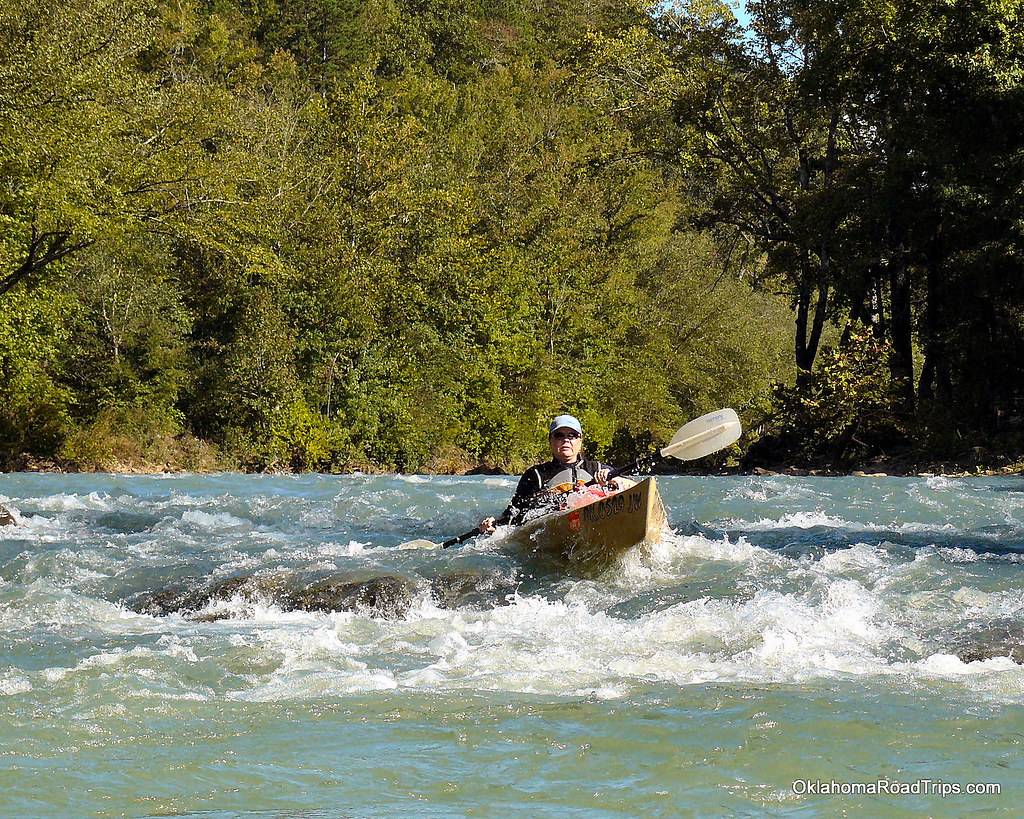
The Mulberry River flows through the Ozark National Forest, offering technical whitewater during spring runoff and scenic floating during summer months. Designated as a National Wild and Scenic River, the Mulberry drops approximately 55 feet per mile in its upper sections, creating continuous Class II-III rapids that challenge intermediate paddlers while remaining accessible for those building their whitewater skills. The surrounding forest showcases spectacular spring wildflower displays and vibrant fall foliage, with numerous swimming holes and gravel bars perfect for riverside breaks. Unlike many southern whitewater runs, the Mulberry’s watershed lies entirely within protected national forest, ensuring exceptional water quality and undeveloped shorelines. The river’s seasonal nature means spring paddling (March-May) offers the most reliable water levels, though summer thunderstorms can temporarily raise levels and provide paddling opportunities during warmer months.
14. Wekiva River, Florida

Just minutes from Orlando’s tourist corridors, the Wekiva River provides a pristine subtropical paddling experience through old-growth cypress forests and crystal-clear spring runs. The river’s main attraction is its remarkable clarity, allowing kayakers to observe river life below the surface, including fish, turtles, and occasionally manatees seeking the springs’ constant 72-degree waters. The Wekiva’s designation as a National Wild and Scenic River has protected it from development, preserving a wilderness corridor through one of Florida’s most densely populated regions. Wildlife viewing opportunities include alligators, otters, numerous turtle species, and exceptional bird diversity ranging from tiny warblers to imposing wood storks. The river’s consistent year-round flow from spring sources makes it paddleable in all seasons, though winter offers more comfortable temperatures and increased chances of manatee sightings when these gentle mammals seek warmer waters.
15. Snake River, Wyoming
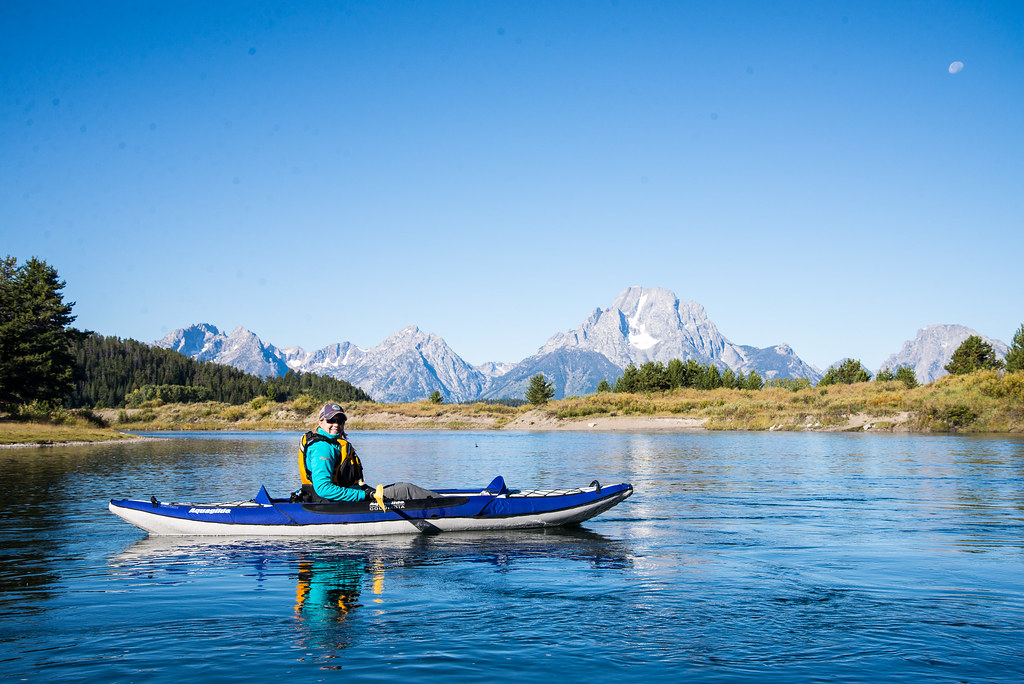
The Snake River’s journey through Grand Teton National Park provides kayakers with arguably the most dramatic mountain backdrop of any paddling destination in America. The river’s braided channels wind through meadows and forests with the jagged Teton Range towering directly above, creating a paddling experience that’s as much about the surrounding landscape as the water itself. Wildlife viewing opportunities are exceptional, with moose frequently spotted feeding in riverside willows, bald eagles perched in cottonwoods, and occasional glimpses of bears, wolves, or elk along the shore. Different sections cater to various skill levels, from calm flat water perfect for photography to challenging whitewater rapids in the canyon sections. Summer provides the most reliable conditions, though spring paddling coincides with wildflower blooms and fall trips showcase spectacular aspen colors against the mountain backdrop.
America’s lakes and rivers offer paddling experiences that range from peaceful wilderness immersion to heart-pounding whitewater adventures. These fifteen destinations represent the diverse waterways that make the United States a premier kayaking destination, each offering its own unique combination of natural beauty, wildlife encounters, and paddling challenges. Whether you’re drawn to the red rock canyons of the Southwest, the crystal springs of Florida, or the mountain-fed rivers of the Northwest, these waterways provide lifetime memories for paddlers willing to leave the shore behind. As you plan your next kayaking adventure, remember that these natural treasures deserve our respect and protection to ensure they remain pristine for future generations of paddlers to enjoy.

